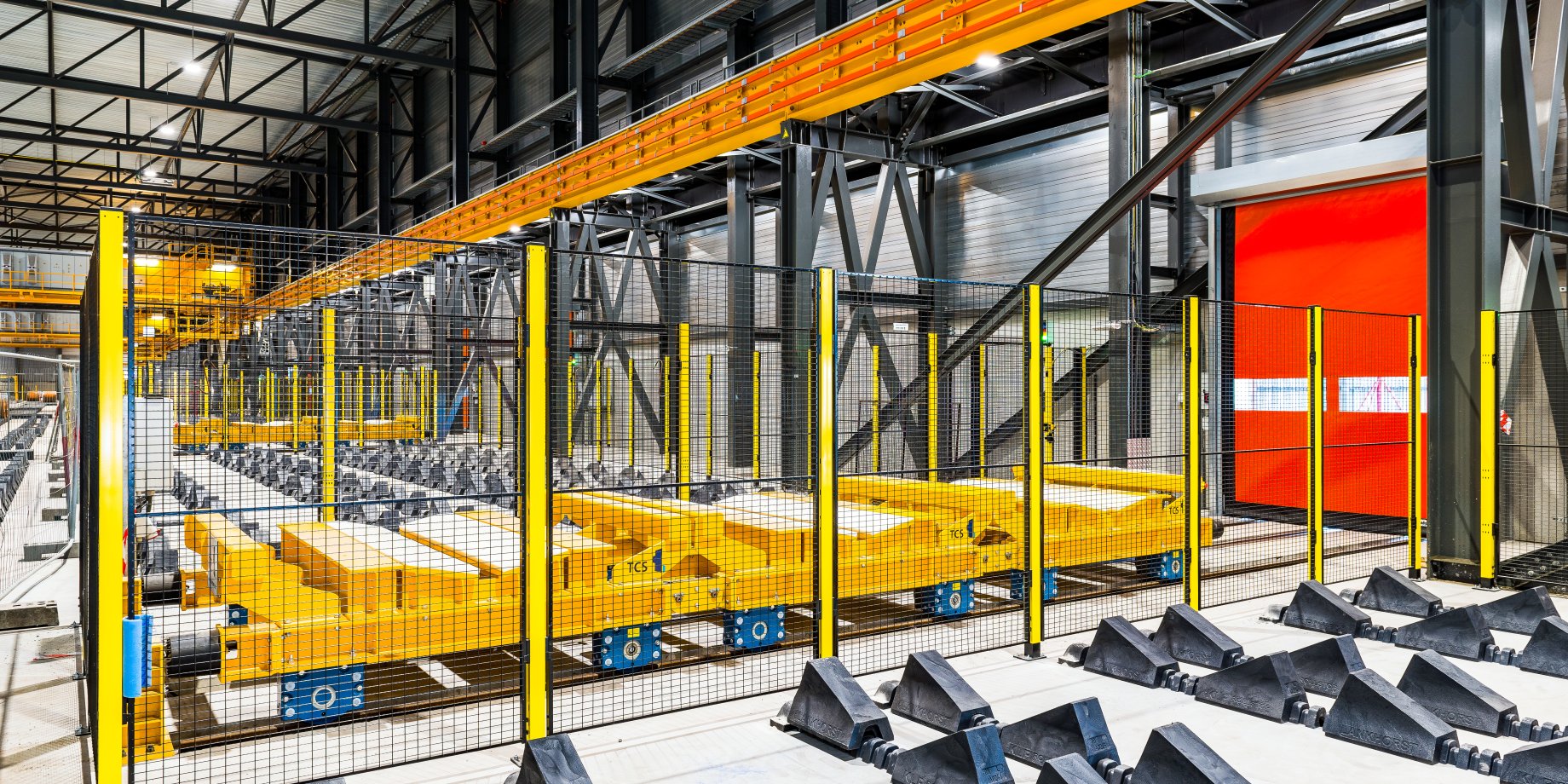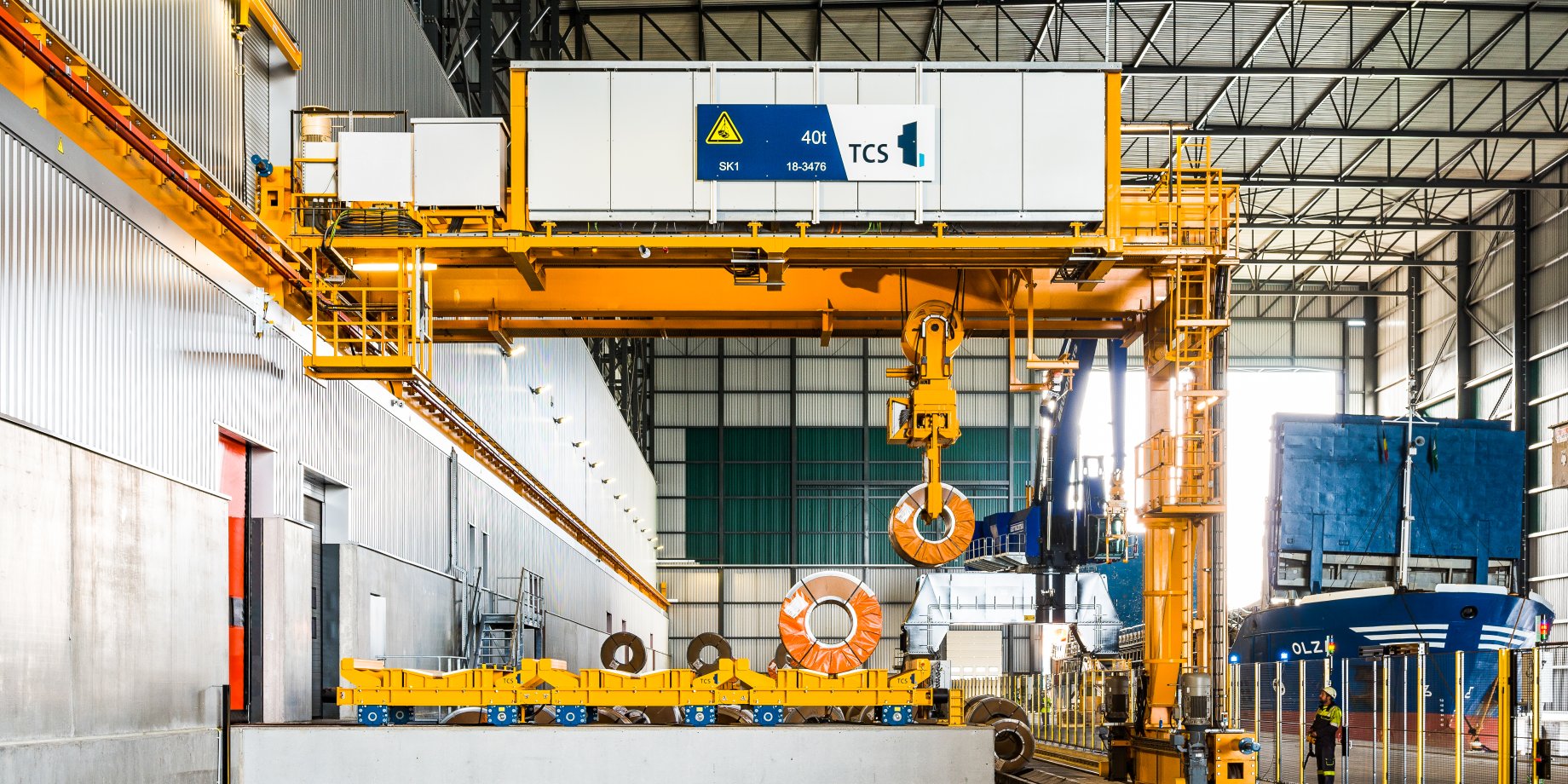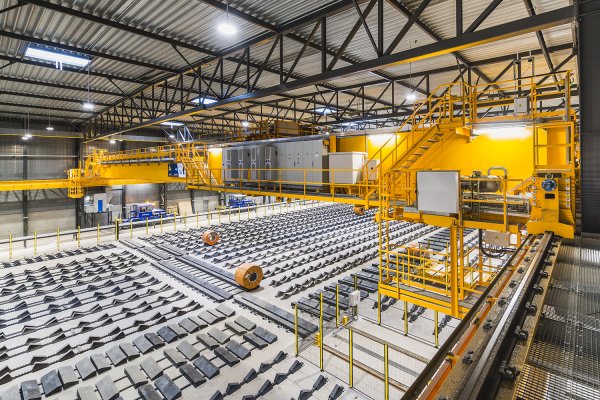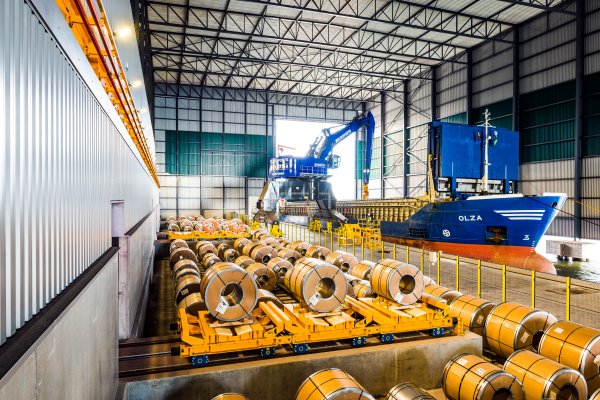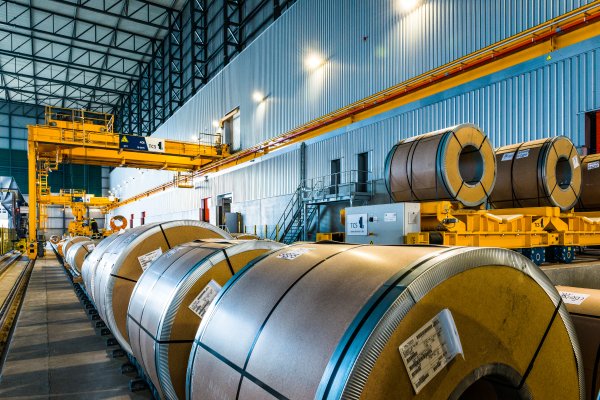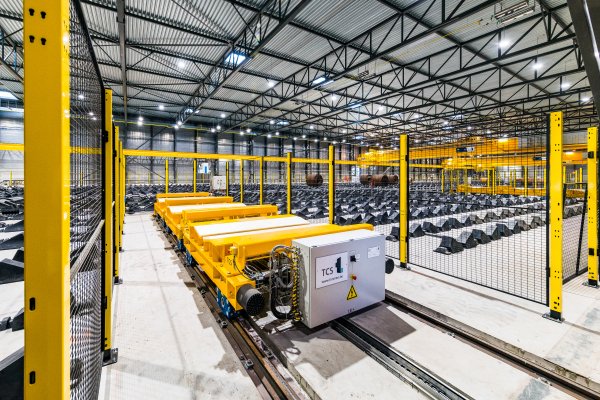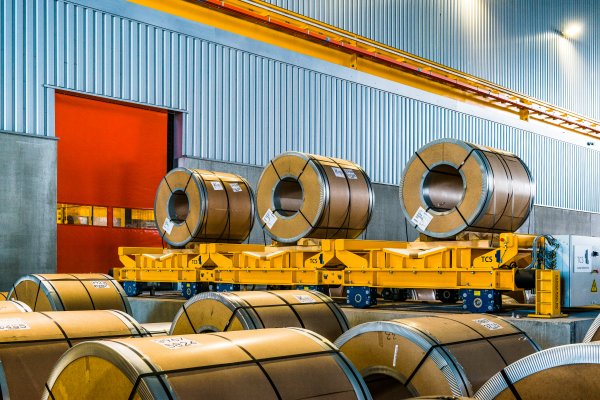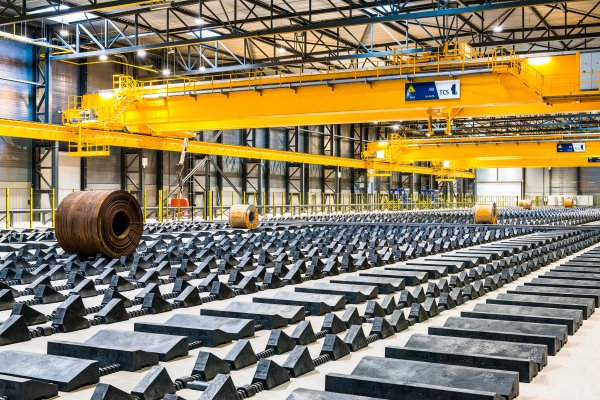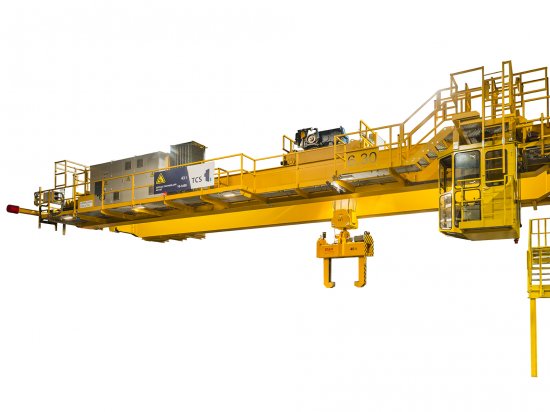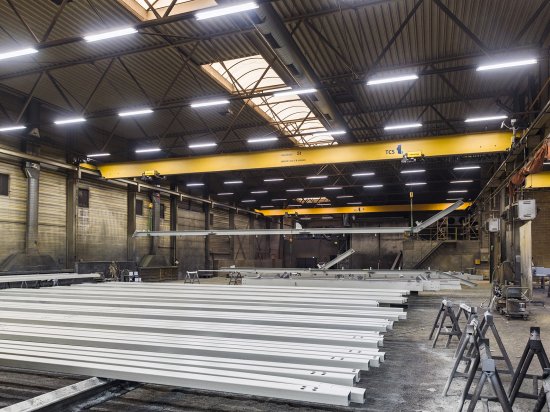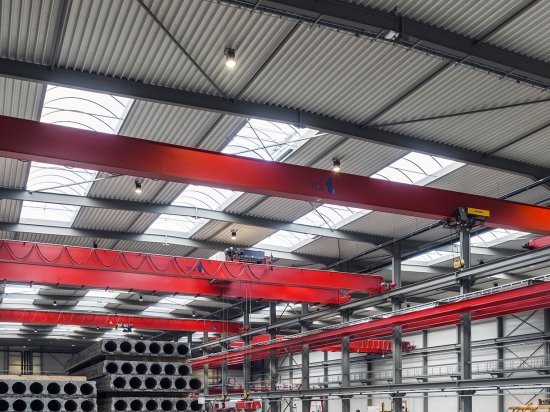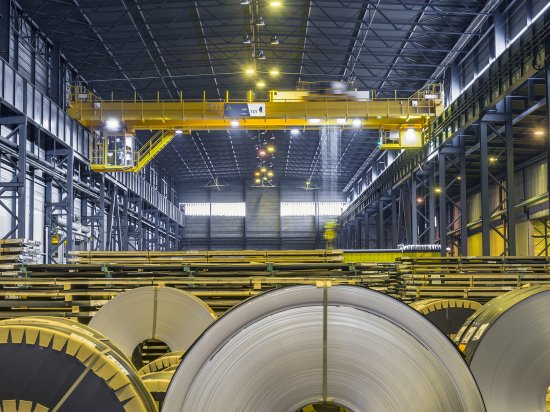An automatic and intelligent process
ArcelorMittal provided the flexible automation of transport movements at the terminal, crucial for operational efficiency.
Van Steenberge explains the operations: “There is a whole intelligence behind the automatic storage and sorting system and an extensive apparatus of scanners and sensors.” The storage location of the coils in the warehouse is fully automatic, based on the characteristics and dimensions of the coils, the space and accommodation available for storage and the scheduling of subsequent deliveries. Costs are also taken into account. Subsequently, for each delivery, the correct coils are brought to the loading dock fully automatically using the warehouse cranes, eight transfer cars and two sorting cranes. On the quay, the coils are then perfectly positioned to be picked up and loaded manually with large harbor cranes. It took extensive research to arrange the interaction of the various components efficiently and safely."
Perfectly aligned
TCS designed, built and supplied the warehouse cranes, transfer cars, and sorting cranes for this process. Van Steenberge: "That is the hardware of the system, we provided the software. We collaborated very closely with TCS to perfectly align the crane dimensioning and process automation. Afterall, TCS has the experience and expertise to correctly size cranes for the entire 20-year life cycle, taking the expected load cycles into account. They also made sure the cranes are easily maintainable. We had to deliberate continuously going forward because their design and the dimensions of the cranes have an impact on the acceleration and deceleration speeds and thus on the duration of the different movements. Those are crucial parameters in such automation, and indispensable to be able to adjust the electric motors very precisely."
Three fased test program
A first test rig was built at TCS in Houthalen-Helchteren "During the test rig we performed a manual test of each crane individually," Van Steenberge clarifies. "Only after the test, we assembled everything at the new terminal in Ghent, with the cranes on the rails in their final location. This allowed us to test and properly adjust the system as a whole, as well as the interaction between the various cranes and the anti-collision devices. After that, in cooperation with operator Euroports, we also finalized the fencing and the demarcation of the safety zones.”
